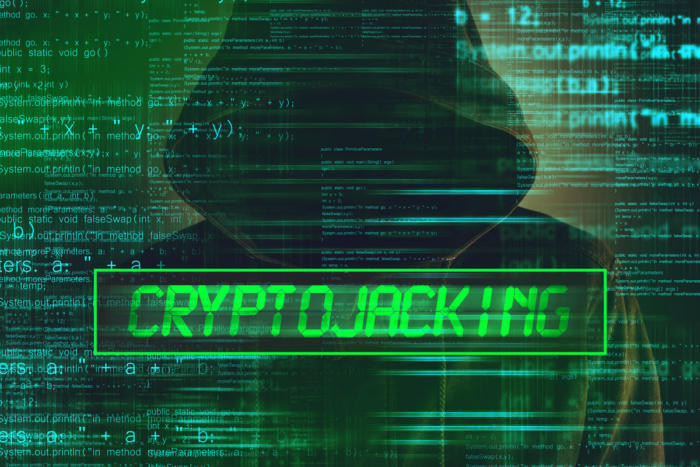Cryptojacking is a relatively new and sneaky issue in the field of cybersecurity. Although the name may evoke images from a science fiction book, it refers to a very real and common problem that affects both individuals and businesses. Cryptojacking is the practice of uninvited parties, frequently without the owner of the device’s knowledge or agreement, using computer resources to mine bitcoins. We’ll dive into the realm of cryptojacking in this in-depth guide, explaining what it is, how it operates, the effects it can have, and most importantly, how to defend yourself against it.

What is Cryptojacking?
Cryptojacking is the unauthorized use of someone else’s computing resources to mine cryptocurrencies. To verify and safeguard transactions on the blockchain network, miners of cryptocurrencies like Bitcoin and Ethereum must solve challenging mathematical riddles. There is a large computational demand for this operation, which results in energy consumption and hardware wear and tear. Cybercriminals turn to cryptojacking as a way around the expenses involved in mining.
How Cryptojacking Works:
Cryptojacking typically occurs through two primary methods: browser-based and malware-based attacks.
- Browser-based cryptojacking
- In this method, hackers take advantage of holes in websites or insert malicious scripts into trustworthy websites. When a user accesses one of these websites, their web browser inadvertently runs the script, which uses the device’s processing power to mine cryptocurrency. The performance of the user’s system may slow down, but most of the time the infiltration goes undetected.
- Malware-based Cryptojacking
- This type of cybercrime involves dispersing malicious software that intends to infect a victim’s device. Attackers utilize various methods, including phishing emails, malicious downloads, and unpatched software vulnerabilities, to infiltrate systems with this malware. After installation, the malware discreetly mines cryptocurrency using the CPU or GPU of the device in the background. Malware-based cryptojacking, in contrast to browser-based attacks, can continue to function even after the victim shuts their browser.
Impact of Cryptojacking:
Cryptojacking poses several risks and consequences for individuals and organizations:
- Performance Degradation
- As a result of the increased use of computational resources, devices that are the target of cryptojacking encounter a notable reduction in performance.
- Energy Consumption
- Cryptojacking may lead to higher energy usage, which may result in higher electricity costs for impacted people or businesses.
- Hardware Damage
- Prolonged use of CPUs and GPUs in particular can accelerate wear and tear and increase the risk of early hardware breakdown.
- Financial Loss
- Businesses may experience financial losses as a result of lower productivity and operational inefficiencies brought on by cryptojacking, in addition to higher energy expenses.
- Reputation Damage
- Companies who succumb to cryptojacking run the danger of losing their clients’ trust and tarnishing their brand, especially if private data is revealed.
Protecting Against Cryptojacking:
Preventing cryptojacking requires a multi-faceted approach involving both technical measures and user awareness:
- Make use of anti-cryptojacking extensions and ad blockers
- Ad-blockers and specialized browser extensions can prevent browser-based cryptojacking scripts, aiding in prevention.
- Maintain Software Updates
- To address known vulnerabilities that hackers use for cryptojacking, update operating systems, web browsers, and security software on a regular basis.
- Use Endpoint Protection
- Set up trustworthy anti-virus and anti-malware programs that can identify and eliminate cryptojacking malware from compromised machines.
- System Performance
- Keep an eye out for any odd increases that can point to cryptojacking activities by monitoring system performance metrics like CPU and GPU use.
- Educate Users
- Educate staff and users about cryptojacking risks; encourage safe online practices, such as avoiding dubious links and downloads from unidentified sources.
Conclusion
Cryptojacking represents a significant threat to individuals, businesses, and organizations, exploiting computing resources for illicit gain. By understanding cryptojacking and taking appropriate precautions, you can protect yourself from this elusive online fraud. Stay vigilant, keep systems updated, and remain aware to reduce cryptojacking risks in the digital world.
